How to know if your form fit is straight?
A straight line measures the distance between two locations. It measures one point to another without deviating.
We use straight lines and angles regularly when creating nails including form fitting, smile lines, filing techniques and nail art. It doesn’t have to be complicated and this post will break it down for you.
Natural nails and fingers are not uniform. Take a look at your hand. Due to holding a mobile phone regularly, it is likely that your pinkie finger curves inward.

Typically, the index fingernail tilts downwards; the middle fingernail tilts a little less downwards and the ring fingernail tends to be straighter.
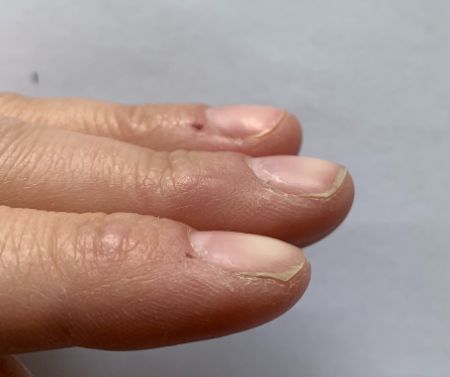
Rarely, some will be perfectly straight but more often they are bent or grow upwards (ski slope nails) or downwards (hooked nails). When creating nail enhancements, we need to correct these irregularities. The set of enhancements must be consistent, so if one nail grows downwards and the other straight, how the form is placed will look different on these two nails.
There can be much conflicting information referring to different positions of the form as up; down or straight. To achieve the correctly structured enhancement, we need to eliminate guess work and illusions when measuring these lines and angles.
Often, the nail form will give the illusion that it is tilting upwards due to the form being closed in a point, or the natural nail growing downward, but it is mathematically straight. It is important to always follow precision.
Firstly, we need to understand angles.
Right angle: A right angle forms of the letter L, and it makes a square corner. It measures 90 degrees. Using this angle, we can ensure a straight position with a nail form.
Straight angle: A straight angle measures 180 degrees and it has two lines that have a common endpoint. This equates to a straight line.
Acute angle: An acute angle is anything that measures less than 90 degrees. Using this angle, we can ensure the nail form is tilted downwards for an almond or stiletto fit.
Obtuse angle: An obtuse angle is more than 90 degrees but less than 180 degrees.
Now let’s put these angles into practice for form fitting and corrections.
As we have covered, nails do not grow perfectly and may also be missing corners due to damage or trauma. Because of this, when we fit a form from the side view and check its positioning, we measure against the finger and not the natural nail side wall. Fingers are often crooked, so it is important to only use the end finger joint to measure this.
By lining up the form at the perfect angle with this part of the finger, this automatically creates a corrected natural side wall. While the upper arch changes on different shapes all side walls must come out straight. The angle in which your form is directed is vital to success with this.
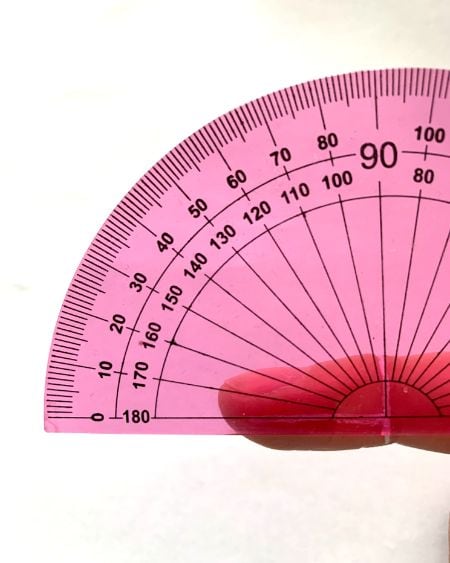
Right angle viewed from the side
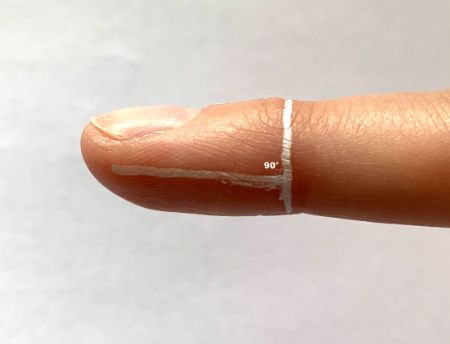
Measuring straight from the side
From the birds-eye view, we use the same part of the finger to measure a straight line and correct a crooked finger.
Section both of these off by creating right angles. You can use KB Form Tailoring Pen, which easily wipes off afterwards.
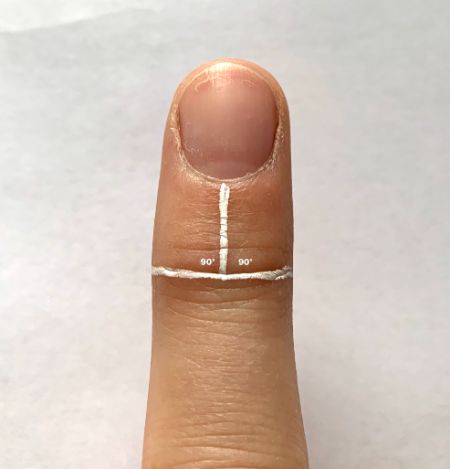
Measuring straight from the front view
Nail forms have guide lines on which can be valuable whilst others can prove disadvantageous. To be beneficial, these guide lines need to be perfectly straight.
Unfortunately, many nail forms have slightly slanted guide lines and can be mis-aligned during printing which creates difficulty measuring straight lines because it can throw your eye. By nature of the name, these are just guides.
To know if your ruler and form fit is perfectly straight, tuck it into the right angle. Both the horizontal and vertical lines you have drawn should sit perfectly straight in this right angle.
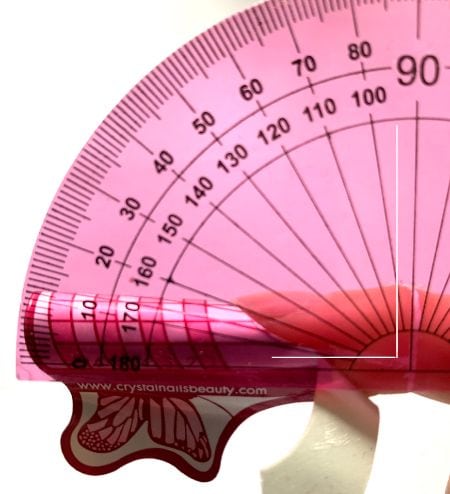
Right angle square form fit
The free edge shape of a square shaped enhancement is a right angle and the upper and lower arch are perpendicular. This is the relationship between two lines which meet at a right angle.
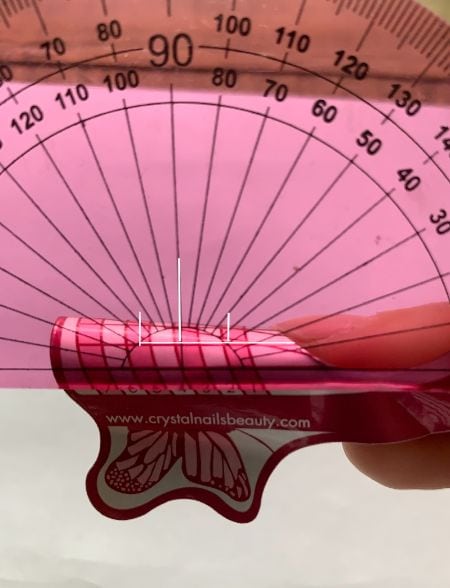
90 degree square shape
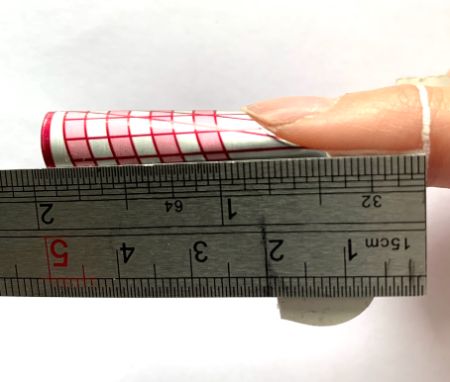
Ruler straight
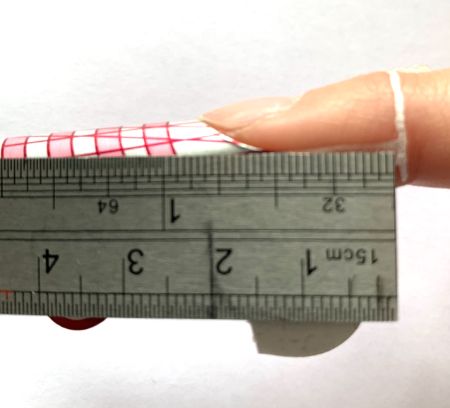
Ruler up
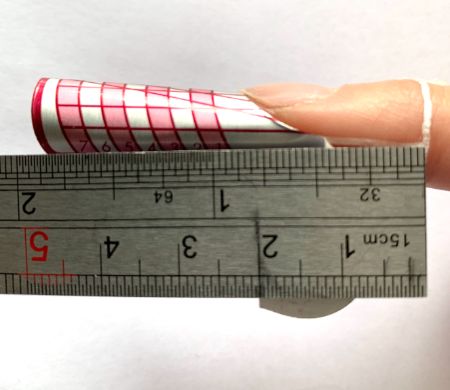
Ruler down
To know if your ruler and in turn an almond or stiletto nail form fit is tilting down, you will see an acute angle. The degree of this acute angle will alter depending upon the length to achieve.
To calculate this precisely, we still work with a right angle, but we measure this from a different place. A straight line and therefore the side wall need to extend from the corner point of the natural nail to the end of the free edge shape.
This line will be parallel with the centre line of the finger.
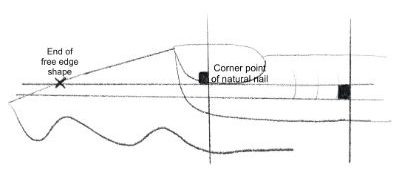
Almond form fit
The more you use these techniques, you will train both your eye and brain and be able to recognise these angles without aid.
To learn more about form fitting and adjustments, sign up to our free form fitting masterclass and guide here.


Leave a comment